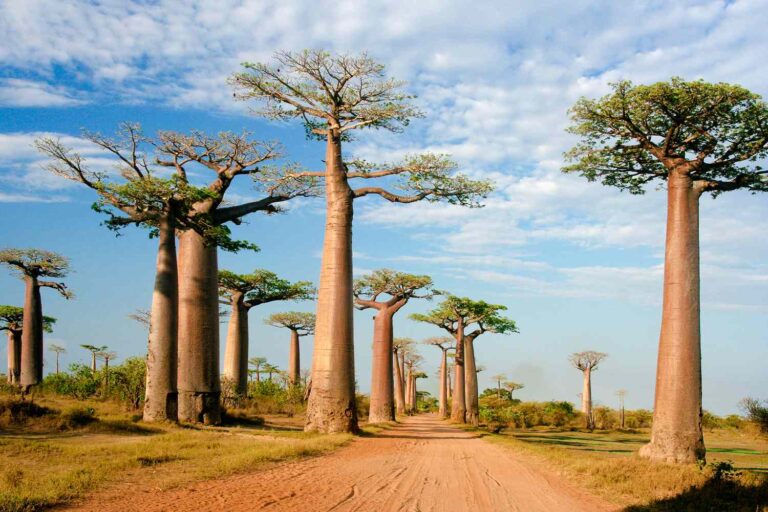For those who dream of experiencing the extraordinary biodiversity and stunning landscapes of Madagascar, planning your trip around the best time to visit is crucial. This fascinating land, often referred to as the “Eighth Continent,” is renowned for its unique flora and fauna, from the iconic lemurs to the extraordinary baobab trees. However, before embarking on your Madagascan adventure, it’s essential to be aware of both the most favorable and least ideal times to visit.
Madagascar’s diverse climate and geography create distinct seasons that can significantly impact your travel experience. Understanding these seasonal variations will help you make informed decisions and ensure you have the most enjoyable and memorable trip possible.
As you plan your itinerary, keep in mind that Madagascar’s “best time to visit” depends on your interests and preferred activities. For those seeking to explore the island’s wildlife and witness the lemurs in their natural habitat, the dry season (April to October) is generally considered the optimal time. However, if you’re primarily interested in beach activities and coastal exploration, the wet season (November to March) offers its own unique charms.
In this comprehensive guide, we will delve into the best and worst times to visit Madagascar in 2024, providing you with valuable insights to help you plan a truly exceptional journey. Get ready to discover the hidden gems and extraordinary encounters that await you in this captivating land.
Best Time to Visit Madagascar
Dry Season (April to October)
The dry season, extending from April to October, is widely regarded as the best time to visit Madagascar for wildlife enthusiasts and nature lovers. During this period, the weather is generally dry and sunny, with minimal rainfall, which provides excellent conditions for exploring the island’s diverse ecosystems.
The dry season is particularly ideal for wildlife viewing, as the reduced vegetation allows for better visibility of the animals. This is the prime time to witness the playful antics of lemurs, including the critically endangered Indri, as they forage and socialize in their natural habitats. Other endemic species, such as the fossa and aye-aye, are also more likely to be spotted during this time of year.
Shoulder Seasons (March-April and October-November)
The shoulder seasons, which fall between the dry and wet seasons (March-April and October-November), offer a blend of favorable weather conditions and fewer crowds. If you’re looking to avoid the peak tourist season but still enjoy pleasant weather, the shoulder seasons are a great choice.
During these transitional months, the weather is generally mild, with occasional showers that help to keep the vegetation lush and green. Wildlife viewing can still be rewarding during the shoulder seasons, as the animals are actively feeding and preparing for the upcoming wet or dry season.
Worst Time to Visit Madagascar
Wet Season (November to March)
The wet season in Madagascar, which runs from November to March, is characterized by heavy rainfall and occasional cyclones. While the wet season can offer its own unique experiences, it’s generally considered the least ideal time to visit Madagascar for several reasons.
During the wet season, many roads become impassable, making it difficult to travel around the island. The heavy rains can also lead to flooding and landslides, which can pose safety hazards and disrupt travel plans. Additionally, the wet season can make it challenging to spot wildlife, as animals tend to seek shelter from the rain.
Culture, Best Months to Visit, Nearby Transportation, Local Food, and Best Hotels
Culture
Madagascar’s rich and diverse culture is a fusion of African, Asian, and European influences. The people of Madagascar, known as Malagasy, are renowned for their warm hospitality and vibrant traditions. You will have a unique opportunity to interact with locals, learn about their unique way of life, and experience their vibrant music, dance, and art forms.
Best Months to Visit
As mentioned earlier, the best months to visit Madagascar depend on your travel preferences. For wildlife viewing, the dry season (April to October) offers ideal conditions. However, if you’re interested in beach activities and coastal exploration, the wet season (November to March) can be a better option. The shoulder seasons (March-April and October-November) offer a compromise between favorable weather and fewer crowds.
Nearby Transportation
Antananarivo, the capital of Madagascar, is the main transportation hub of the country. The Ivato International Airport (TNR) offers flights to and from major cities around the world. Once in Madagascar, you can travel by plane, bus, or taxi to different parts of the island. Renting a car is also an option if you prefer to explore at your own pace.
Local Food
The cuisine of Madagascar is a blend of Malagasy, French, and Chinese flavors. Staple foods include rice, cassava, and sweet potatoes, which are often accompanied by meat, fish, or vegetables. Some of the local delicacies to try include “romazava,” a beef stew flavored with ginger and garlic; “mofo gasy,” a deep-fried dough; and “neny,” a type of cassava bread.
Best Hotels
Madagascar offers a wide range of accommodation options, from budget-friendly guesthouses to luxurious resorts. In Antananarivo, consider staying at the Colbert Hotel or the Le Pavillon de l’Emyrne. For a unique and authentic experience, opt for the Palmarium Hotel in Andasibe, which offers treehouse bungalows overlooking a rainforest. If you’re heading to Nosy Be, check out the Vanila Hotel or the Tsarabanjina Lodge for a relaxing beachside getaway.
Conclusion
Madagascar is a land of unparalleled natural beauty and cultural richness. By carefully considering the Best & Worst Time to Visit Madagascar in 2024, you can tailor your trip to align with your interests and ensure a truly unforgettable experience. Embrace the vibrant culture, indulge in the local cuisine, and marvel at the extraordinary wildlife that Madagascar has to offer. Whether you choose to visit during the dry season for optimal wildlife viewing or the wet season for a unique coastal adventure, Madagascar is sure to captivate your senses and leave you with lasting memories.
